- medicabaze.cz - Human prion infections
- wikipedie.cz - Bovine spongiform encephalopathy
- solen.cz - Superficial candidiasis and treatment options
- solen.sk - Human prion diseases with regard to Creutzfeldt-Jakob disease
Bacteria, viruses and others: as agents of serious diseases?

In the past, the origin of disease was attributed to the wrath of gods, demons and spirits. In healing (magic), amulets and talismans were used. However, with the development of mankind, the real causative agents were being discovered. Among the first to be discovered were bacteria and parasites. Less well known and very old organisms related to bacteria are archaea, the classification of which is ambiguous. In 1897, the famous scientists Loefler and Frosh looked at a pathogen whose existence was known but not described. Thus viruses were discovered. In the context of the search for the causative agent of BSE, prions came to prominence. Fungi are also among the causative agents of disease.
Article content
- What disease agents do we know?
- Prions - a particular public health problem
- Viruses. Will they one day become the bane of mankind?
- Bacteria and their increasing resistance to antibiotics
- Archaea - the oldest and extremely hardy organisms
- Fungi are a big problem because of their insidiousness
- Protozoa - in the past classified as animals
- Parasites are part of the real world, not just movies
After an incubation period, the disease begins to manifest itself externally by a set of symptoms. The symptoms vary according to the type of agent and which organ or organ system is attacked.
Infectious diseases and epidemics are a major public health, social and economic problem. This has not been different in the past after an outbreak of an unknown disease, usually resulting in death. The threat of new infections and mutations of the causative agents is always there!
What disease agents do we know?
Despite their small size, they can bring down the big guy. We are talking about microscopic organisms whose bodies are made up of just one cell (bacteria), or in some cases not even one (viruses). But that does not stop them from afflicting individuals and humanity as a whole.
The main categories of pathogens are:
- prions - mutated proteins
- viruses - non-cellular microorganisms
- bacteria - single-celled microorganisms
- Archaea - single-celled microorganisms
- fungi - unicellular, fungal microorganisms
- protozoa - unicellular parasites
- parasites - simple organisms
Micro-organisms are found in nature and pose a potential danger to humans and their health. They are transmitted from person to person, from infected animals, less frequently from soil or plants or through secondary contamination of water, food and objects.
The gateway may be the digestive tract, respiratory tract, wounded skin, genital tract and others.
There are pathogens that leave no serious effects, pathogens with effects, and pathogens that can cause death in humans. Some pose a biological threat to all humanity.

Biological risk - biohazard
The European Centre for Disease Prevention and Control (ECDC), based in Stockholm, deals with the assessment of potential and existing risks from biological agents. This includes the issue of bioterrorism.
Interesting fact: The biohazard symbol was developed by environmental engineer Charles Baldwin in 1966 and is still used today to refer to biohazardous material and other biological hazards.
Prions - a particular public health problem
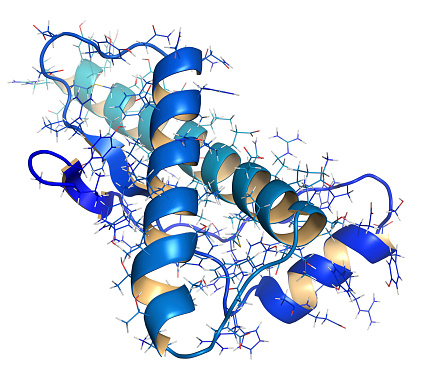
Prions affect both animals and humans. Research into prion diseases such as BSE (mad cow disease), Creutzfeld-Jcob disease, Gertsman-Sträussler syndrome has cost the European Union billions. What is it?
Interesting fact: The failure of well-funded research is due to the long incubation period of prion diseases, which lasts for decades. There is still no laboratory method to prove their presence in humans or animals during this period.
What are prions?
Prions (proteinaceous infectious proteins) are non-cellular 'organisms', more precisely mutated protein particles. Unlike viruses, they do not contain any nucleic acid. Their basic structure is made up of amino acids. However, the order of the amino acids is altered (disrupted) by mutations. This also disrupts their properties.
They have only recently been discovered in the context of the search for the causative agent of BSE. The mechanisms by which they reproduce and the nature of the disease changes in the organism are not yet known.
The fact is that unmutated prion proteins are normally found in the human body. In this state they do not cause problems.
Prions are resistant to commonly used disinfectants. They are also well able to withstand temperatures. They can survive up to one hour at 120 °C and about one minute at 240 °C.
Interesting fact: The transmission of prion infection from animals to humans has not yet been 100% scientifically confirmed. In humans, prion infection most often manifests itself as Creutzfeldt-Jacob disease, which has a proven genetic basis (mutations in the gene at codon 200). However, in 1996, an epidemic occurred. The disease had interesting differences in its clinical picture and affected younger individuals. This indicates a high probability of such transmission.
What do prions cause?
Prion infections are also known as transmissible spongiform encephalopathies. They are rare but serious and usually fatal neurodegenerative diseases. The chapter on these diseases is still not fully understood and therefore constitutes a major medical problem.
Table with an overview of diseases caused by prions
| Prion infections - transmissible spongiform encephalopathies | Source and other interesting information |
| Bovine spongiform encephalopathy (BSE) |
|
| Creutzfeldt-Jakob disease |
|
| Gertsman-Sträussler syndrome |
|
| Fatal familial insomnia (FFI) |
|
Viruses. Will they one day become the bane of mankind?
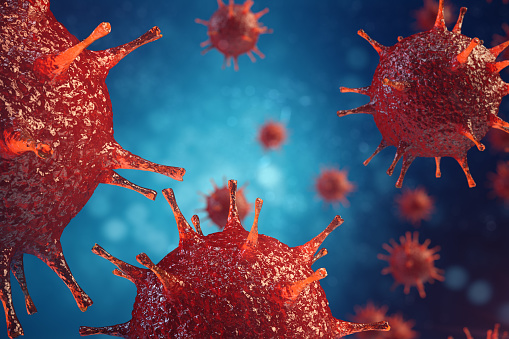
Viruses are also called 'intracellular parasites' because they exclusively infect living organisms. This is due to the absence of a proteosynthetic apparatus and therefore the impossibility of replication outside a living cell. Virus reproduction occurs by transverse division.
Interesting fact: In 2008, a French research team discovered a virus that behaves aggressively not only towards humans but also towards other viruses and attacks them. It is the Sputnik virus. It is a separate group of so-called virophages.
What are viruses?
Viruses (subcellular organisms) are non-cellular organisms or particles. They contain only one type of nucleic acid in a protein shell - the capsid. They can be RNA (ribonucleic acid) or DNA (deoxyribonucleic acid). They are further categorised as RNA viruses and DNA viruses.
In addition to lacking the ability to reproduce themselves outside living cells, they also lack the ability to grow and metabolise themselves. A virus survives outside living cells in the form of a virion. Yet it can attach itself to its host cell by means of a capsid and cause damage to it.
Once it enters a living cell, it first damages its DNA and eventually the whole cell. In addition, it multiplies, causing damage to other cells, whole tissues and ultimately causing the death of the whole organism.
Interesting fact: Long Island is home to the Animal Disease Center. It is a Level III facility. Despite all the safety precautions, malaria found its way out in 1999. In the same year, the West Nile virus was released, and West Nile fever in 2002. These were accidents that claimed their victims. But viruses can also be released deliberately, for example during wartime conflicts, which would pose a threat to all mankind!
What do viruses cause?
In addition to the basic categorization of viruses into DNA and RNA viruses, they are divided according to family, subfamily, genus and species. For example, influenza virus belongs to the RNA viruses, the family Orthomyxoviridae, the genus Influenzavirus type A, B, C, the species for example Influenzavirus H5N1 and causes avian influenza. There are a large number of viruses and they cause countless diseases.
Table with basic categorization of DNA and RNA viruses
| Representatives of RNA viruses |
|
| DNA virus representatives |
|
Bacteria and their increasing resistance to antibiotics
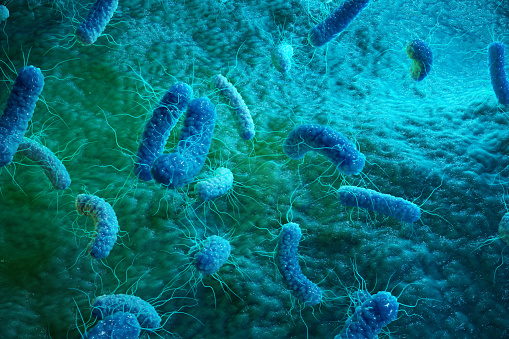
According to the WHO, bacteria may also become a threat to us. This is because of the increasing resistance of bacteria to antibiotics, precisely because of their overuse. Unless a new, stronger drug can be developed by 2050, deaths from bacterial infections will increase.
Interesting fact: According to the WHO, by 2050, certain species of bacteria will be a mortal danger. Acinetobacter, Enterobacteriaceae, Pseudomonas are considered the most critical.
What are bacteria?
Bacteria (Bacteria, Schizomycetes) are unicellular organisms of different shapes. Spherical bacteria are called cocci (staphylococci, streptococci, pneumococci). Rod-shaped bacteria are shaped like rods or spirals. They can be in the form of a straight rod (bacillus), a curved rod (vibrio), a wavy rod (spirilla), a spiral rod (spirochete).
They consist of a cell wall, cytoplasmic membrane, cytoplasm, nucleus (nucleoid) and have their own DNA. There are flagella on the surface of the bacteria for better movement and a glycocalyx to help them adhere better to surfaces.
They reproduce like viruses by division (reaching twice their size) or by budding (a new daughter cell forms on the surface).
Interesting fact: Bacteria shrink and turn into spores when there is a lack of "food". They survive as spores for years without food. If the external environment is put right, they can become infectious again.
What causes bacteria?
Bacteria cause a wide range of diseases of all organs. Some are trivial, others fatal. The general course of a bacterial infection depends on several factors such as the age of the patient, the condition of the patient, associated diseases and others. The more trivial bacterial diseases include, for example, tonsillitis, the more fatal ones include, for example, pneumonic plague.
Classification of bacteria by shape
| Spherical shape (cocci) |
|
| Rod-shaped (rods, bacilli) |
|
| Curved shape |
|
| Filamentous distribution |
|
| Branched distribution |
|
Archaea - the oldest and extremely hardy organisms
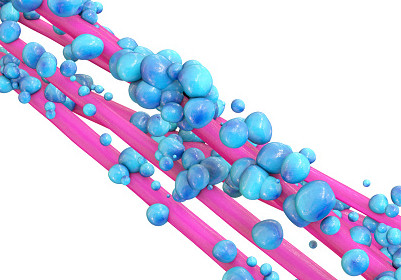
Archaea are one of the oldest groups of organisms. They are similar to bacteria in their structure and body build, hence their other name Archaeobacteria. The long survival of these unicellulars is due to their extremely high resilience, which makes them able to survive even in the most extreme conditions.
Interesting fact: Archaea have what is known as biodegradative properties, meaning that they are able to destroy toxic substances. These properties are used, for example, in wastewater treatment.
What are archaea?
Archaea (Archaea, Archaeobacteria) are unicellular organisms. Their cell structure differs in some respects (chemical composition) from that of bacteria, which is ultimately reflected in their effect on humans. If bacteria cause disease, archaea do not.
They survive in extreme conditions without access to oxygen (called anaerobes). Their most common habitat is hot springs, where they produce methane.
In the past, these organisms were classified as bacteria or formed one of their subcategories. Nowadays, they form a separate group with two subcategories (Crenarchaeota, Euryarchaeota).
Interesting fact: Up to two-thirds of prokaryotic organisms (bacteria, archaea) are found on the seabeds of the seas and oceans. Drilling in the North Atlantic has uncovered prokaryotes that are up to 111 000 years old. They are found at depths of 113 °C, which even favours their growth.
What causes archaea?
Despite their similarity to bacterial micro-organisms, archaea do not cause disease in humans. However, their properties are used in industry, mainly in biotechnology.
Fungi are a big problem because of their insidiousness
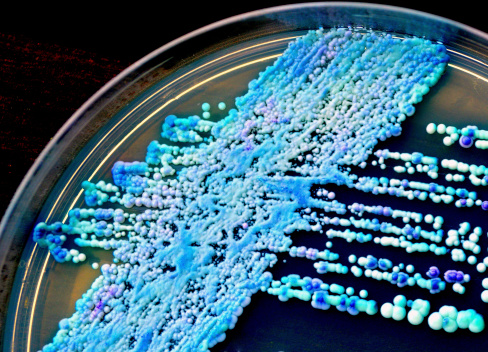
Fungi pose two problems for patients. One is health, especially if the disease is untreated or misdiagnosed. However, properly treated mycoses can usually be managed very well. The second problem is aesthetic, because one of the organs attacked by these parasitic fungi is the skin.
Interesting fact: Soda bottles pose a risk of contracting fungal diseases. In 2006, scientists at the University of Freiburg came to a surprising conclusion. As many as 39 bottles out of a total of 60 checked contained pathogens of fungi, but also other intestinal diseases. The reason is that the parts of the bottles that carry water cannot be cleaned well.
What is mould?
Fungi (mycoses) are fungal micro-organisms made up of a single cell. When the right conditions are created, they cause invasive mycotic diseases in humans. They most often affect the skin, mucous membranes and nails. However, in immunodeficient patients, they can also cause serious damage to internal organs.
They are mostly spherical or oval in shape. The size of the fungi depends on their age. The different strains of yeasts also differ in colour. Like other micro-organisms, they reproduce asexually, by swarming.
Some species of mould are beneficial to humans and their properties are used in health care (penicillin), food processing (fermentation) and biotechnology. Other species cause disease (e.g. Candida albicans).
Interesting fact: Fungi were first observed with a primitive microscope by the Dutch scientist and businessman Anton van Leeuwenhoek. He was and still is known as the "father of microbiology", mainly because of the improvement of the then primitive microscopes and the subsequent emergence of microbiology.
What causes moulds?
Mould is found everywhere around us. It is even a natural part of our microflora. However, under normal circumstances and in a healthy individual, it does not cause health problems. It is even referred to as a saprophyte. However, under certain circumstances and conditions, moulds multiply, colonise and damage the body. Some of the most common are sores, skin, mucous membrane, nail and vaginal mycoses.
Classification of the basic types of fungi
| Albicans candida |
|
| Non-albicans candida |
|
| Filamentous fungi |
|
Protozoa - in the past classified as animals
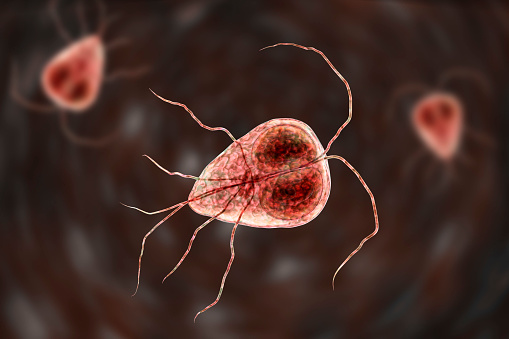
Protozoa were observed with a microscope at the same time and by the same person as the fungi - Anton van Leewehoek. They were even classified as animals in the past because of their ability to move actively. The categorization was changed later. They are currently classified as microorganisms, which are further subdivided into subcategories based on the way they move.
Interesting fact: Protozoa reproduce in a dual way. They have asexual reproduction (by dividing into multiple individuals) and sexual reproduction (by fusing gametes). They can combine these two ways. Alternate reproduction occurs.
What are protozoa?
Protozoa are unicellular micro-organisms. The older Latin name protozoa is a holdover from the time when they were classified in the animal kingdom. Translated, it means primordial animals. Not surprisingly, some protozoa (such as the hookworm) can be up to 5 mm in size. However, most are smaller and can only be seen with a microscope. They can be classified as parasites.
The body of these unicellulars consists of a cytoplasmic membrane and cytoplasm, which contains other components (nucleus, mitochondria, Golgi apparatus, phagosome, microtubules).
They are characterised by movement in different ways. Passive movement is by water or wind flow. Active movement is by whips, flagella, quills or cilia. Alternatively, it is by cytoplasmic spillover (the mechanism of this is not precisely understood).
Interesting fact: Protozoa are ubiquitous. They are found in water (both salt and fresh), in soil, on the surface of plants and on the surface and inside animals. They have an important and irreplaceable role in their ecology (e.g. the self-cleaning capacity of water).
What do protozoa cause?
Protozoa are the causative agents of various diseases, even though it may not seem so at first sight. For example, toxoplasmosis transmitted by cats or more serious diseases transmitted by mosquitoes (malaria), tsetse flies (sleeping sickness), bed bugs (Chagas disease) and others (giardiasis, hookworm dysentery, leishmaniasis) are well known.
Classification of protozoa by mode of movement
| Whipworms | move by means of flagella |
| Rootworms | move with the help of panoptera |
| Founders | move with cilia |
| Spores | have no locomotory organs, they glide |
Parasites are part of the real world, not just movies
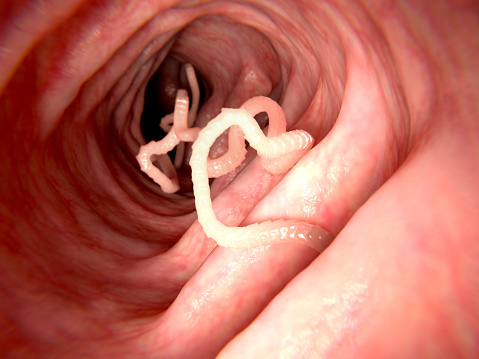
The term parasitism refers to the relationship between two organisms. One is the parasite and the other is the host. A parasite is an organism that depends on its host. The host is usually a human or animal and is used and damaged by the parasite. An intermediate host is an organism that temporarily houses a parasite that has not yet reached maturity (adulthood).
Interesting fact: When someone says mistletoe, we usually think of a couple in love who kiss underneath it. The reason is the belief that if they do, their love will last forever. In the past, mistletoe has been considered a magical plant. However, in reality, mistletoe is a semi-parasite that attaches itself to tree trunks and removes minerals from them. It does not, however, damage the tree.
What are parasites?
Parasites (parasitos) are organisms with a simple body structure. Their organs and organ structures simplify their alien way of life. Some organs typical of humans may be missing in parasites. For example, the tapeworm lacks a digestive system.
Infection can occur relatively easily, especially if hygiene is not maintained (intestinal parasites, lice) or accidentally (ticks). Parasitic diseases can also be contracted through sexual contact (filcs).
Parasites have a life cycle that takes place in the body of one or more hosts. They reproduce sexually and asexually. In any case, they have a high reproductive potential.
What do parasites cause?
Parasites harm their host either directly (mechanical damage to organs and tissues, production of toxins and cell-damaging enzymes) or indirectly (allergies, autoimmune diseases, behavioural disorders). Death of the host is rare and not immediate. They cause diseases such as ascariasis, giardiasis, amebiasis, malaria.
Interesting fact: Parasitic diseases are particularly dangerous for pregnant women. In some cases, infection during pregnancy can cause severe fetal malformations.
The most common categorization of parasites
| Classification by body structure |
|
| Classification by place of occurrence |
|
| Classification according to the duration of parasitism |
|
Mikroorganizmy pod mikroskopom (poľsky)
Interesting resources










